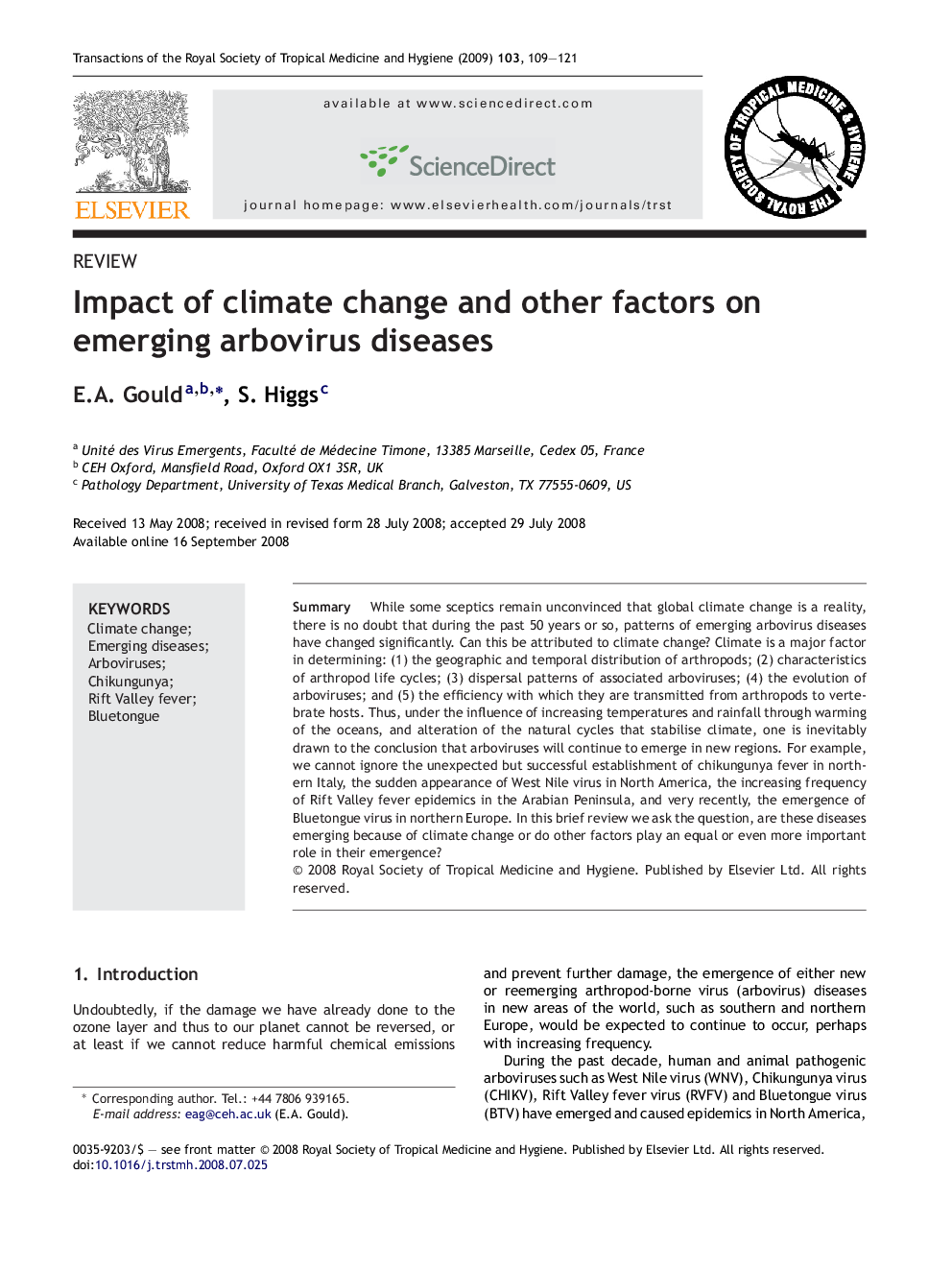| Article ID | Journal | Published Year | Pages | File Type |
|---|---|---|---|---|
| 3421035 | Transactions of the Royal Society of Tropical Medicine and Hygiene | 2009 | 13 Pages |
SummaryWhile some sceptics remain unconvinced that global climate change is a reality, there is no doubt that during the past 50 years or so, patterns of emerging arbovirus diseases have changed significantly. Can this be attributed to climate change? Climate is a major factor in determining: (1) the geographic and temporal distribution of arthropods; (2) characteristics of arthropod life cycles; (3) dispersal patterns of associated arboviruses; (4) the evolution of arboviruses; and (5) the efficiency with which they are transmitted from arthropods to vertebrate hosts. Thus, under the influence of increasing temperatures and rainfall through warming of the oceans, and alteration of the natural cycles that stabilise climate, one is inevitably drawn to the conclusion that arboviruses will continue to emerge in new regions. For example, we cannot ignore the unexpected but successful establishment of chikungunya fever in northern Italy, the sudden appearance of West Nile virus in North America, the increasing frequency of Rift Valley fever epidemics in the Arabian Peninsula, and very recently, the emergence of Bluetongue virus in northern Europe. In this brief review we ask the question, are these diseases emerging because of climate change or do other factors play an equal or even more important role in their emergence?
